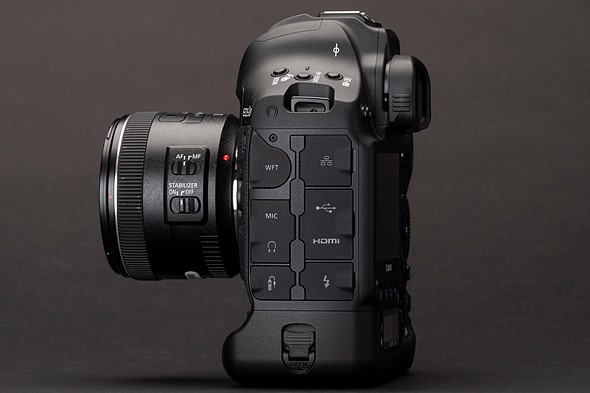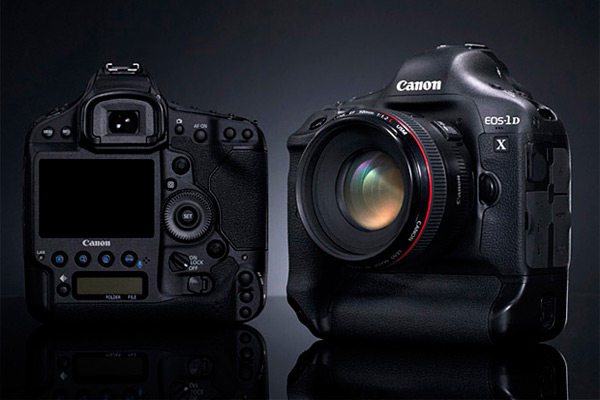Introduction
The Best Photo Cameras of 2024: In the rapidly evolving world of photography, 2024 has proven to be a landmark year for camera technology. Whether you’re a professional photographer looking to upgrade your gear or an amateur enthusiast eager to capture memories in stunning detail, choosing the right camera is crucial. Advancements in sensor technology, autofocus systems, video capabilities, and overall design have given photographers more tools than ever to express their creativity.
This article delves into the best photo cameras in 2024, exploring different types of cameras, from DSLRs to mirrorless, compact, and action cameras. We’ll cover key features, pros and cons, and why each camera stands out in this highly competitive market. By the end of this guide, you’ll have a clearer idea of which camera suits your needs, helping you make an informed decision for your next purchase.
Top Factors to Consider When Choosing a Camera in 2024
Image Quality

Image quality is paramount when choosing a camera. The debate between megapixels and sensor size continues, but 2024 has shown that both are crucial in different contexts. High-resolution sensors, some reaching upwards of 100 megapixels, are now more accessible and provide incredible detail. However, sensor size remains critical, especially for low-light performance and dynamic range.
Larger sensors, such as full-frame and medium-format, excel at capturing more light and producing images with rich detail and color accuracy. This is particularly important for landscape and portrait photographers who need high dynamic range and color fidelity. On the other hand, APS-C and Micro Four Thirds sensors offer a balance between quality and portability, making them ideal for travel and street photography.
Camera Type
In 2024, there will be several types of cameras to choose from, each with its own advantages. Understanding the differences can help you select the right one for your photography style.
DSLR Cameras
Digital Single-Lens Reflex (DSLR) cameras remain popular among traditionalists who value their robust build, optical viewfinders, and extensive lens options. While the mirrorless revolution has recently overshadowed DSLRs, models like the Canon EOS-1D X Mark IV offer unparalleled action and sports photography performance.
Mirrorless Cameras
Mirrorless cameras have dominated the market in 2024, offering compact designs, fast autofocus, and superior video capabilities. These cameras are lighter and often more versatile than their DSLR counterparts without a mirror mechanism. Models like the Sony A7R V and Canon EOS R5 Mark II are leading the pack, catering to photographers and videographers with their high-resolution sensors and advanced features.
Compact Cameras
Compact cameras are an excellent choice for those who prefer portability without sacrificing quality. They are small enough to carry in your pocket but powerful enough to deliver professional-level results. The Sony RX100 VIII and Canon PowerShot G7 X Mark IV are top contenders in this category, offering impressive zoom ranges and high-quality sensors in a compact form.
Action Cameras
Action cameras are designed for adventurers and sports enthusiasts who need a rugged, waterproof camera to capture high-quality video and photos in extreme conditions. The GoPro HERO12 Black and DJI Osmo Action 4 are the latest models, offering 4K video, advanced stabilization, and a host of features perfect for capturing action on the go.

Medium Format Cameras
For photographers who demand the highest possible image quality, medium-format cameras offer the ultimate in detail and dynamic range. These cameras have larger sensors than full-frame cameras, making them ideal for commercial and fine-art photography. The Fujifilm GFX100S stands out in 2024, offering 102 megapixels of resolution in a relatively compact and affordable package.
Lens Compatibility and Versatility
A camera is only as good as the lenses you can use with it. Lens compatibility is crucial, especially for photographers who already own a collection of lenses. Some systems, like Canon’s RF and Nikon’s Z mounts, offer adapters that allow the use of older lenses, providing a seamless transition for those upgrading from DSLRs to mirrorless.
Moreover, the availability of third-party lenses from brands like Sigma and Tamron expands the versatility of these cameras, offering more choices at different price points. A versatile lens ecosystem can significantly enhance your creative options, whether you need wide-angle, telephoto, or macro lenses.
Video Capabilities
As video content continues to grow in importance, many cameras in 2024 come equipped with advanced video features. 4K has become the standard, but 8K is increasingly common in high-end models like the Canon EOS R5 Mark II. Frame rates, bit rates, and codecs are also important considerations, particularly for videographers requiring post-production flexibility.
Hybrid cameras that excel in photo and video, like the Sony A7S III, are particularly popular among content creators. These cameras offer professional-grade video features, such as 10-bit color depth, high frame rates, and excellent autofocus, making them suitable for various video applications.
Portability and Ergonomics
While image quality and features are crucial, a camera’s portability and ergonomics should not be overlooked. A camera that feels comfortable in your hands and is easy to carry around will encourage you to use it more often. This is especially important for travel and street photographers who need a light and durable camera.
Cameras like the Fujifilm X-T5 and Olympus OM-D E-M1 Mark III balance performance and portability, offering robust bodies that are still lightweight enough for long shooting sessions. Ergonomics, including button placement, grip design, and menu layout, also significantly affect how user-friendly a camera is.
Battery Life
Battery life can make or break a photography session, especially in the field without access to a charger. Cameras with long battery life, like the Nikon D850, are favored by professionals who need reliability during extended shoots. However, despite their advantages, mirrorless cameras often have shorter battery life than DSLRs due to their electronic viewfinders and advanced features.
Spare batteries and external battery packs are a common solution, but cameras that offer USB charging or power delivery via USB-C, like the Sony A7R V, add convenience, allowing photographers to recharge their cameras using portable power banks.
Connectivity Options
In today’s connected world, the ability to quickly share photos and videos is more important than ever. Cameras in 2024 come equipped with various connectivity options, including Wi-Fi, Bluetooth, and even 5G in some models. These features allow photographers to wirelessly transfer images to their smartphones, tablets, or computers, making sharing content on social media or cloud storage easier.
Some cameras offer direct live-streaming capabilities, making them ideal for vloggers and content creators. The Canon EOS R5 Mark II, for example, supports live streaming via Wi-Fi, allowing users to broadcast in real time without the need for additional equipment.
Price and Value for Money
Finally, price and value for money are key considerations when choosing a camera. While high-end models offer cutting-edge features, they come at a premium price. However, plenty of mid-range and budget options provide excellent performance without breaking the bank.
Understanding your needs and budget will help you find a camera that offers the best value. For example, the Nikon Z5 offers full-frame performance at a relatively affordable price, making it an excellent choice for hobbyists and enthusiasts.
The Best DSLR Cameras of 2024
Canon EOS-1D X Mark IV
The Canon EOS-1D X Mark IV is the flagship DSLR for professionals who demand the highest performance. With a 20.1-megapixel full-frame sensor and dual DIGIC X processors, this camera excels in speed, offering up to 20 frames per second (fps) in continuous shooting mode. Its autofocus system is one of the best in the market, providing reliable tracking for fast-moving subjects, making it a favorite among sports and wildlife photographers.
Pros:
- Outstanding build quality and durability
- High-speed performance and fast autofocus
- Excellent battery life
Cons:
- Heavy and bulky
- Expensive compared to mirrorless alternatives
Nikon D850
The Nikon D850 remains a top choice for photographers who need high resolution and versatility. Its 45.7-megapixel full-frame sensor delivers stunning image quality with an impressive dynamic range and low-light performance. The D850 is also highly regarded for its durability and ergonomics, making it suitable for various photography genres, from landscapes to portraits.
Pros:
- Exceptional image quality and resolution
- Versatile and durable design
- Excellent battery life
Cons:
- Slower autofocus compared to newer mirrorless models
- Large and heavy body
Pentax K-3 Mark III
For those who prefer an APS-C sensor in a DSLR body, the Pentax K-3 Mark III is a compelling option. With a 25.7-megapixel sensor and in-body image stabilization, this camera delivers excellent image quality in a compact, weather-sealed body. Pentax’s unique pixel-shift resolution mode adds even more detail to still images, making it a great choice for landscape and macro photography.
Pros:
- Compact and rugged design
- In-body image stabilization
- Excellent image quality for an APS-C sensor
Cons:
- Limited lens options compared to other brands
- Slower autofocus for action photography
The Best Mirrorless Cameras of 2024
Sony A7R V
Sony’s A7R V is a powerhouse in the mirrorless market, offering a 61-megapixel full-frame sensor that produces incredible detail and dynamic range. The A7R V is perfect for still photography and excels in video, with 8K recording capabilities and advanced autofocus features. Its compact body and extensive lens options make it a versatile tool for professionals and serious enthusiasts.
Pros:
- High-resolution sensor with superb image quality
- Advanced autofocus system with eye-tracking
- 8K video recording
Cons:
- Expensive
- Battery life could be better
Canon EOS R5 Mark II
The Canon EOS R5 Mark II builds on the success of its predecessor with improved video capabilities and faster autofocus. Its 45-megapixel sensor delivers stunning images, while its 8K video recording and 4K at 120fps make it a top choice for hybrid shooters. The camera’s in-body stabilization and weather-sealed construction further enhance its appeal to professionals.
Pros:
- Excellent image and video quality
- Fast and accurate autofocus
- Robust build quality
Cons:
- High price point
- Potential for overheating during prolonged 8K recording
Nikon Z8
The Nikon Z8 is a mirrorless camera that balances the high-end Z9 and the more affordable Z7 II. With a 45.7-megapixel sensor and a powerful EXPEED 7 processor, the Z8 offers exceptional image quality and speed. It’s designed for photographers who need professional-level performance without the bulk of the Z9.
Pros:
- High-resolution sensor with excellent dynamic range
- Fast and responsive autofocus
- Compact and lightweight design for its class
Cons:
- No built-in flash
- Battery life could be improved
Fujifilm X-T5
The Fujifilm X-T5 is a favorite among photographers who appreciate retro design combined with modern technology. Its 40-megapixel APS-C sensor delivers excellent image quality, and Fujifilm’s renowned color science ensures stunning color reproduction. Thanks to its compact size and intuitive controls, the X-T5 is particularly popular for street and travel photography.
Pros:
- Excellent image quality and color reproduction
- Compact and stylish design
- Extensive range of high-quality lenses
Cons:
- APS-C sensor may not satisfy full-frame purists
- Limited battery life
Panasonic Lumix GH6
For videographers, the Panasonic Lumix GH6 is a top contender. Its Micro Four Thirds sensor is optimized for video, offering 4K recording at 120fps and 5.7K at 60fps. The GH6 also features advanced stabilization and video-centric features, making it a versatile tool for filmmakers and content creators.
Pros:
- Exceptional video capabilities
- Compact and lightweight body
- Advanced in-body stabilization
Cons:
- Smaller sensor limits still image quality compared to full-frame
- Autofocus could be faster
The Best Compact Cameras of 2024
Sony RX100 VIII
The Sony RX100 VIII is the latest in highly regarded compact cameras. It features a 1-inch sensor and a 24-200mm zoom lens, offering flexibility in a pocket-sized package. The RX100 VIII excels in photo and video, with 4K recording, fast autofocus, and a pop-up electronic viewfinder.
Pros:
- Compact and portable design
- Versatile zoom range
- High-quality 4K video
Cons:
- Expensive for a compact camera
- Limited battery life
Canon PowerShot G7 X Mark IV
The Canon PowerShot G7 X Mark IV is another excellent option for those seeking a high-performance compact camera. It features a 1-inch sensor and a 24-100mm lens, making it ideal for everyday photography and vlogging. Compared to its predecessor, the G7 X Mark IV also offers improved autofocus and better low-light performance.
Pros:
- Outstanding image quality for its size
- Excellent video features
- Compact and easy to use
Cons:
- Limited zoom range compared to some rivals
- No external microphone input
Panasonic Lumix LX100 II
The Panasonic Lumix LX100 II is a compact camera with a difference: it features a large Micro Four Thirds sensor in a compact body. This combination provides excellent image quality and creative control, making it a favorite among enthusiasts who want a small camera without sacrificing performance. The LX100 II also offers 4K video and a fast zoom lens.
Pros:
- Large sensor for a compact camera
- Excellent image quality and dynamic range
- 4K video recording
Cons:
- No built-in flash
- Limited zoom range
The Best Action Cameras of 2024
GoPro HERO12 Black
GoPro continues to dominate the action camera market with the HERO12 Black. This camera offers 5.3K video at 60fps, improved HyperSmooth 5.0 stabilization, and a rugged, waterproof design. Whether you’re capturing extreme sports or underwater adventures, the HERO12 Black delivers stunning footage easily.
Pros:
- Superior video quality and stabilization
- Durable and waterproof design
- Extensive accessory ecosystem
Cons:
- Battery life could be better
- Expensive compared to other action cameras
DJI Osmo Action 4
The DJI Osmo Action 4 is a strong competitor to the GoPro, offering 4K video at 120fps and a front-facing vlogger screen. Its RockSteady 4.0 stabilization ensures smooth footage, while its rugged build makes it suitable for all outdoor activities.
Pros:
- Excellent video stabilization
- Front-facing screen for vlogging
- Durable and weatherproof
Cons:
- Limited to 4K video
- Shorter battery life under heavy use
Insta360 ONE RS 1-Inch Edition
The Insta360 ONE RS 1-Inch Edition is unique in the action camera market. It offers a 1-inch sensor that delivers superior image quality and low-light performance. This modular camera lets you switch between different lenses and setups, making it incredibly versatile. It’s particularly well-suited for those needing more video quality control in a compact, rugged body.
Pros:
- Large sensor for an action camera
- Modular design with interchangeable lenses
- Excellent low-light performance
Cons:
- More expensive than typical action cameras
- Bulkier than other action cameras
Conclusion
As 2024 unfolds, the landscape of photography continues to evolve with groundbreaking cameras that push the boundaries of what’s possible. Whether you’re a professional photographer, hobbyist, or content creator, a camera out there meets your needs. This year, from the high-speed performance of the Canon EOS-1D X Mark IV to the versatile Sony A7R V and the ultra-portable Sony RX100 VIII, offers something for everyone.
Choosing the right camera ultimately comes down to understanding your requirements—image quality, video capabilities, portability, or budget. With this comprehensive guide, you can make an informed decision and find the perfect camera to capture your world in 2024.
FAQs
- What is the best camera for beginners in 2024?
The Nikon Z5 is an excellent choice for beginners due to its user-friendly interface, solid image quality, and relatively affordable price for a full-frame camera.
- Are DSLRs still worth buying in 2024?
While mirrorless cameras have largely taken over, DSLRs like the Canon EOS-1D X Mark IV still offer great performance, especially for those who prefer optical viewfinders and longer battery life.
- Which camera is best for vlogging in 2024?
The Canon PowerShot G7 X Mark IV and the DJI Osmo Action 4 are excellent vlogging options thanks to their compact size, flip-up screens, and superior video quality.
- What is the best camera for professional photographers in 2024?
The Sony A7R V is highly recommended for professionals due to its high-resolution sensor, advanced autofocus, and exceptional video capabilities.
- How vital is sensor size when choosing a camera?
Sensor size is crucial as it affects image quality, depth of field, and low-light performance. Full-frame and medium format sensors typically offer the best performance, but APS-C and Micro Four Thirds sensors are great for those who need portability.
Author Profile

Latest entries
- August 19, 2024Photo PrintsHow to Clean Glass Pictures: Keep Your Memories Sparkling
- August 19, 2024Photo PrintsThe Best Photo Cameras of 2024
- August 19, 2024Photo PrintsAPG Graphics: The Only Company That Laminates Photos on Glass in the USA
- August 19, 2024Photo PrintsThe Best Online Photo Printing Services for 2024

